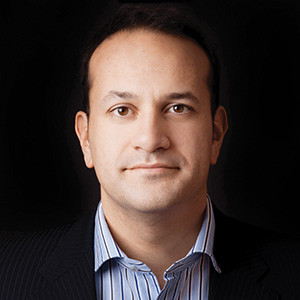A better future in health
These are the kind of catch-cries I hear all the time from some politicians and commentators. They are rarely challenged to spell out their own alternative, or say why or how things could be better.
This sort of commentary takes no account of the many changes and reforms that have already occurred in the Health Service, and which continue to happen. It’s also unfair to staff who have led the reform programme, and co-operated with it, right through one of the darkest periods in Irish history.
Admittedly, it’s probably the kind of thing I might have said myself a few years ago. Having had a bit of experience as a government Minister, and more recently as Minister for Health, I think I understand things better now.
I certainly don’t have all the answers, but I do know that the Health Service needs reform. I also know that any reform must be properly thought through, project-managed and change-managed. And every reasonable effort should be made to involve staff and bring them with us.
The department’s work programme for 2015 sets out 25 actions which are grouped into five themes:
• the Healthy Ireland initiative which includes actions on smoking, alcohol, inactivity and obesity;
• patient outcomes and safety, which deals with issues like delayed discharges, emergency department overcrowding and long waiters for procedures or hospital appointments;
• universal health care, which encompasses GP care without fees for the youngest and oldest in society, more chronic disease management in primary care, and measures to reform and extend health insurance to more people and make it more affordable;
• investing in infrastructure and facilities like the primary care centres and the new children’s hospital; and
• the broad topic of health sector reform.
 Writing for eolas, Minister for Health Leo Varadkar TD rebuts some common critiques of the Health Service and sets out the direction of travel for reform and further improvement.
Writing for eolas, Minister for Health Leo Varadkar TD rebuts some common critiques of the Health Service and sets out the direction of travel for reform and further improvement.
In this article, I want to focus on health sector reform. As I said earlier, there has been lots of reform in the health sector in recent years. Some people are even a little ‘reform drunk’ at this stage. The number of people in ‘interim’ or ‘acting’ positions, in newly created posts or with new reporting relationships is evidence of that.
Reform also causes disruption, and too much reform can give rise to heightened risks. We’ve had the abolition of the health boards, and the creation of the HSE, the HSE regions and the integrated service areas. I am not convinced that all of these reforms changed much for the better.
But what we can say is that we have cut back considerably on excessive administration. The number of management and administration posts is at its lowest since the HSE was established. In contrast, we’ve never had as many consultants, staff midwives or doctors. We need to point that out a little more often.
New structures
The most recent phase of structural reform involves the creation of the hospital groups, which I strongly support. These will be given legal status within the HSE this year, and will evolve into independent hospital trusts over the next five years. The CEOs and management teams and most of the boards are now in place. The first one to be set up as a legal entity in its own right will be the Children’s Hospital Trust. I expect to publish the legislation later this year to do that.
I think it’s fair to say that if we were building a Health Service from scratch, we would not build 40 or 50 standalone hospitals. We’d probably have no more than 12 but alongside them we would build many more primary care centres. Some of these would have minor injury units or urgent care centres attached.
But demolishing all of our hospitals and building a dozen new ones is neither feasible nor affordable. Hospital groups are the best viable alternative, because they link smaller hospitals with bigger ones, along with an academic partner.
Clinical networks are already being set up, as shown by the memorandum of understanding between the Coombe and Portlaoise. Specialty services will be reconfigured, over time, within the groups. The model will be bi-directional with all hospitals doing more work but no longer trying to do a bit of everything. Outside of hospitals, the community healthcare organisations have been established.
Rethinking funding
Another key area of reform is the funding system and the move to activity-based funding. A lot of interesting work on this has been done already.
Moving to this model of funding will provide a direct link between the amount of work done by hospitals and the tax euros they receive. It will incentivise them to do more and to compete with other hospital groups for additional funds.
Activity-based funding should end the practice whereby hospitals increase their spending while cutting back on activity. It is also one of the key building blocks for a new commissioning model, whether that remains tax-funded – as some prefer – or an insurance-based funding model in line with government policy.
There has been a chronic lack of investment in ICT in recent years. In 2015, the budget was increased by
30 per cent from €40 million to €55 million. This needs to be sustained. Key projects include the individual health identifier, free Wi-Fi in healthcare facilities, eReferrals, and ensuring that the new children’s hospital is paperless from day one. Another interesting area of reform is IHARP – the Irish hospitals redesign programme – which is being piloted in Tallaght. It applies modern management theory, like lean and six sigma, to a healthcare setting. If it produces results, we’ll extend it to five or six more hospitals later in the year.
Health is an enormously challenging and very wide brief. I don’t believe there are any easy answers or perfect solutions. Many of the problems we face are mirrored in health services internationally. Some countries have been more successful than others in reforming their health services and addressing challenges. I am always keen to learn from best practice.
But I also call on the nay-sayers within our own shores to take another look at the progress that has been made. We still have a long way to go, and many of the essential reforms are only now getting under way. But health budgets are rising again, there are clear government policies in place, and I know that we have a committed and dedicated workforce across the Health Service. That should be reason for optimism.






